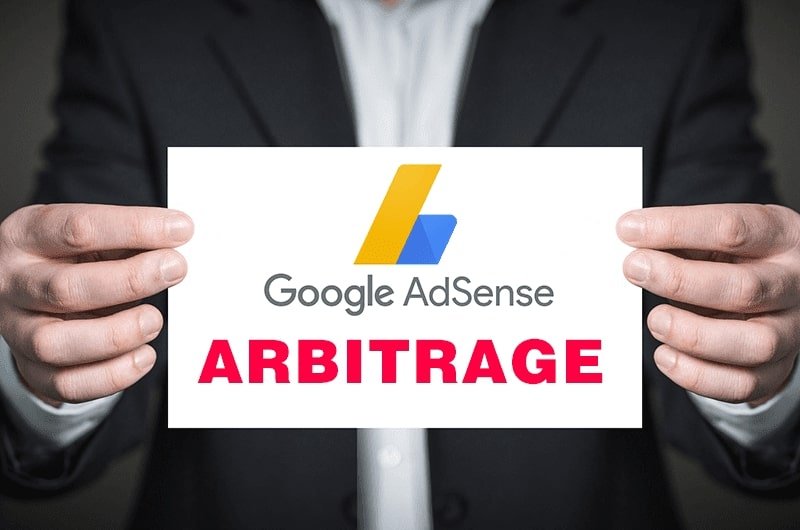What is AdSense Arbitrage and how does it work?
Google AdSense Arbitrage refers to a digital advertising strategy where individuals or businesses aim to profit by leveraging the price differences between the cost-per-click (CPC) rates of ads on their website and the earnings they receive from displaying Google AdSense ads.
In simpler terms, AdSense Arbitrage involves creating a website, often centered around a specific niche, and driving traffic to it through various means, such as social media or search engine optimization. The key is to attract visitors who are likely to click on the ads displayed on the site.
The website owner strategically places ads from Google AdSense, an advertising program, on their site. When visitors click on these ads, the site owner earns revenue from the advertisers. The goal is to generate more income from AdSense clicks than the cost incurred to bring visitors to the site.
This strategy requires a keen understanding of online advertising dynamics, keyword targeting, and audience behavior. Successful AdSense Arbitrage practitioners carefully manage their website content, select high-paying keywords, and optimize their ad placements to maximize earnings.
What is AdSense Arbitrage and how does it work?

Since AdSense Arbitrage is like buying and selling website visitors. Imagine you buy visitors through ads on one platform, and then you sell that same traffic to other advertisers for more money.
It’s a way to make a profit by playing the middleman with online traffic.
Types of AdSense Arbitrage
- Display Ads Arbitrage:
- Search Ads Arbitrage:
- Social Media Arbitrage:
- Native Ads Arbitrage:
- Video Ads Arbitrage:
- Email Ads Arbitrage:
How Does AdSense Arbitrage work

1. Display Ads Arbitrage:
How it Works: Display Ads Arbitrage is a digital marketing strategy that revolves around the acquisition of display ads on one platform, followed by the resale of the resulting traffic to other advertisers.
This process involves careful targeting and optimization to ensure profitability.
How to get started with this form of arbitrage:
1. You are required to purchase a banner ad on a high-traffic website within a specific niche.
2. After securing this ad space at a lower cost, the goal is to resell the traffic generated by these ads to another website or business seeking to enhance its online presence.
The reason why you are doing this is to bridge the gap between the cost of acquiring the initial display ads and the higher price at which the traffic is resold, thereby turning a profit.
2. Search Ads Arbitrage:
How it Works: Search Ads Arbitrage operates by strategically buying traffic through search engine advertisements and subsequently selling this acquired traffic to other advertisers. It involves keyword targeting and effective ad placement to maximize returns.
How to get started with this form of arbitrage:
1. What you have to do is to start running Google Ads to drive targeted traffic to a specific website.
2. The purchased traffic, enriched by users actively searching for relevant content, can then be resold to businesses looking to increase their online visibility.
The success of this strategy lies in the ability to balance the costs of search engine ads with the resale value of the resulting traffic.
3. Social Media Arbitrage:
How it Works: Social Media Arbitrage is centered on the acquisition and leverage of social media ads to generate traffic, which is then sold at a higher rate to other advertisers. This strategy involves understanding audience behavior on platforms like Facebook or Instagram.
How to get started with this form of arbitrage:
1. You are required to run paid ads on a social media platform like Facebook, to attract a specific demographic of audience.
2. The engaged audience can be resold to businesses seeking exposure to this demographic.
The challenge is to effectively manage ad spend and resale pricing for a profitable outcome.
4. Native Ads Arbitrage:
How it Works: Native Ads Arbitrage involves purchasing native ads on one platform and monetizing the resulting traffic. This strategy requires creating content that seamlessly blends with the chosen platform’s user experience.
How to get started with this form of arbitrage:
1. You are required to buy a sponsored content space on a popular website, with the intention of reselling the engaged audience to other advertisers.
2. craft native content that resonates with the platform’s users, ensuring a smooth transition from the native ad to the resold content.
5. Video Ads Arbitrage:
How it Works: Video Ads Arbitrage entails buying video ads and capitalizing on the resulting views by reselling them to other advertisers. This strategy often involves platforms like YouTube.
How to get started with this form of arbitrage:
1. You are expected to purchase video ads on a video-sharing platform and subsequently resell the viewership to other content creators or businesses.
2. creating compelling video content and accurately pricing the resale value of the views obtained.
6. Email Ads Arbitrage:
How it Works: Email Ads Arbitrage focuses on buying ad space within emails and selling the resulting clicks or leads to other advertisers. This strategy requires collaboration with email newsletter providers.
How to get started with this form of arbitrage:
1. Here you are expected to buy space in a popular newsletter for placing ads and reselling the engaged audience to businesses looking for leads or clicks.
2. Target the right audience and ensure the resale value surpasses the initial ad space cost.
Each type of AdSense Arbitrage demands a nuanced understanding of its specific mechanisms and market dynamics, making it essential for digital marketers to tailor their strategies accordingly.
Is Google AdSense Arbitrage illegal?

AdSense Arbitrage, though legal, does have some risks. But, if handled wisely, buying website traffic can be a valid way for website owners around the world to make money.
Factors to consider include;
1. Traffic Quality and Source
The legality of traffic arbitrage hinges significantly on the quality of the purchased and redirected traffic. If the traffic originates from low-quality sources or is acquired through fraudulent practices like click fraud or spam, it raises the potential for legal complications. Ensuring that the sourced traffic is genuine, valuable, and complies with ethical standards is essential to navigate the legal aspects of traffic arbitrage successfully. Adhering to these principles not only safeguards against legal issues but also contributes to a more sustainable and reputable online presence.
2. You Have to Be Transparent as Possible
Being open and honest is super important too. If someone doing traffic arbitrage isn’t clear about where their traffic is coming from, it could break the rules.
3. Keep to the Terms of Service
Following the rules of the platforms used is a big deal. Many traffic arbitrageurs use paid advertising and affiliate programs, and breaking their rules can lead to trouble.
4. Stop Using Fraudulent Methods
Tricking people with misleading ads or using dishonest methods is a big no-no. It’s considered fraud, which is against the law.
5. Dont promote copyrighted or trademarked content
Sometimes, traffic arbitrage involves promoting content that belongs to someone else, like copyrighted material. Doing this without permission can lead to legal action.
6. Competition and Ethics
Lastly, there are ethical concerns. Some people say that traffic arbitrage isn’t fair to other advertisers and businesses. So, it’s important to stay on the right side of the rules and ethics when dealing with traffic arbitrage.
Summary
AdSense Arbitrage is a digital strategy to profit by buying website traffic at a lower cost and selling it to other advertisers at a higher rate. It involves various types like Display Ads, Search Ads, Social Media Ads, Native Ads, Video Ads, and Email Ads Arbitrage. While legal, it comes with risks, emphasizing transparency, adherence to terms of service, and ethical sourcing of traffic. Managed wisely, AdSense Arbitrage can be a legitimate income source for website owners.





















